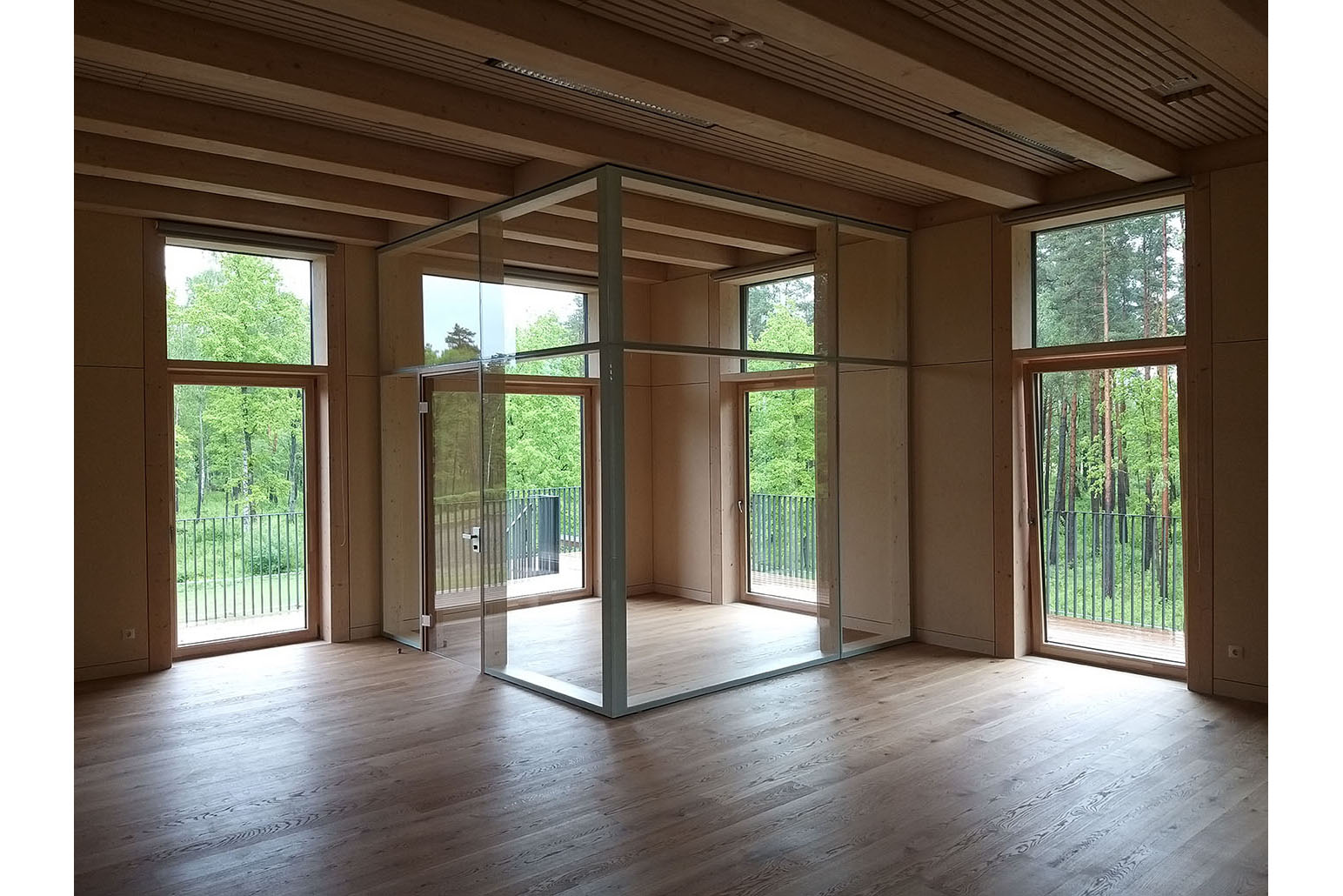Riga Wood birch plywood – a part of sustainable and award winning buildings
17.06.2022
Increased awareness of need for sustainable solutions is causing the construction industry to lean towards wood materials, thus strengthening the position of wooden buildings in the real estate sector.
At the Latvian Construction Annual Award 2021 and the Latvian Construction Engineer of the Year 2021 contests, the new regional Customer Center building of Latvijas Valsts Meži was awarded 1st place in the category “Wooden Structures”. The project was developed following the best practices of sustainable buildings, including energy efficiency, material optimisation, and minimising the negative impact on the environment in both the short- and long term.
Riga Wood birch plywood was used in various stages of the whole construction process, too. For this project, two Riga Wood birch plywood products were chosen – Riga Decor and Riga Form. Riga Decor is a common choice for interior solutions where functionality shouldn’t overshadow aesthetics. The decorative appearance allows it to be used for the design of furniture and other interior elements. Meanwhile Riga Form, another birch plywood product applied in this project, is among the top choices for concrete shuttering.
“For us, this has been a project full of customised solutions – starting from the technical specification to the provided services. Close collaboration between our sales team and customer, as well as mills and the logistics, led to a high-quality end-result.”
Uģis Ozols, Riga Wood Baltic director.
Customer oriented service solutions integrated in the customer’s production line is among top services provided by Riga Wood and Latvijas Finieris team.
It’s well known that construction sector accounts for a hefty amount of CO₂ emissions, and a wave of urban growth is increasing the global building stock. Construction materials such as concrete, steel and aluminium are among those contributing a notable share of generated emissions globally. Nevertheless, by using smart technologies and shifting one’s way of thinking, constructions can become global CO₂ sinks that support climate stabilisation. Wood is the key factor.















